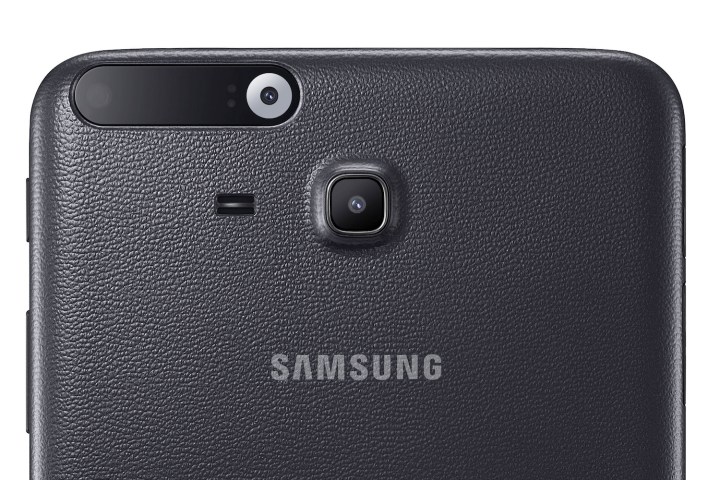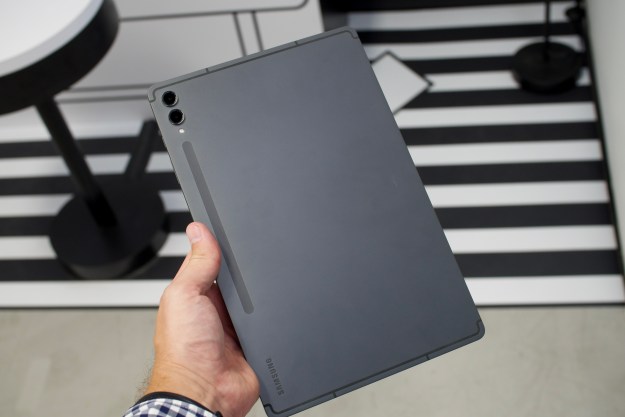
The eye scanner can be found on the rear of the tablet, slightly awkwardly placed in the top corner, away from the standard 5-megapixel camera lens. There aren’t any solid details on the eye scanning technology, but it’s being referred to as an iris scanner, a complex but highly accurate way of verifying identity by examining the pattern of your iris.

One of the ways the Galaxy Tab Iris will be used in India is in conjunction with a local identification system called Aadhaar, a personal ID number that ties citizens — regardless of language, location, or literacy — to welfare programs and other government services. The use of this number is apparently spreading out into banks, schools, and other business as a way to identify people. Currently, authentication is through a special card, but initiatives are in place to make it a digital system, and using biometric authentication will help financial institutions adopt the identification method.
Samsung’s Knox security platform keeps all the data safe, and there’s a software development kit available for developers to build compatible apps, and to integrate support into existing systems. The Galaxy Tab Iris tablet very similar to the existing Galaxy Tab 3, with a 7-inch touchscreen that has a 1024 x 600 pixel resolution, a 1.2GHz processor, 1.5GB of RAM, 3G connectivity, and runs Android 5.0 Lollipop.
This is one of the first commercially available mobile devices with an iris scanner, but it’s not the first time Samsung has been linked with the technology. Rumors are spreading the forthcoming Galaxy Note 6 will include some form of eye recognition system. Perhaps the Galaxy Tab Iris is a testbed for Samsung’s extended use of iris authentication technology? We’ll find out later this year, when the new Note model is likely to be revealed.
Editors' Recommendations
- Every Android tablet we’re expecting in 2024
- Samsung’s newest Android tablet is a perfect iPad alternative
- Samsung just announced another new phone (and two Android tablets)
- There’s a big problem with Samsung’s new Android tablets
- How one bad decision is ruining all of Samsung’s new phones




